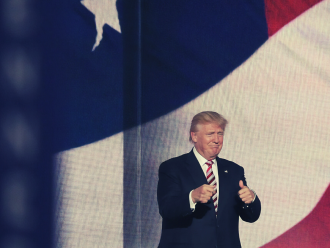With cash continuing to pour into smart beta ETFs, Lynn Strongin Dodds takes a closer look.
“Smart beta strategies allow investors to differentiate the risk levels in their portfolios where adding factors like quality and income can result in low volatility portfolios.”
Mark Raes, BMO Global Asset Management
Although smart beta or factor-based investing has been an embedded fixture on the active investment landscape for many years, their promise to deliver outperformance over the long term has pushed fund manufacturers into overdrive. This is particularly true in the exchange-traded product (ETP) space which is becoming increasingly crowded with several variations on a theme.
The trend is part of the wider movement which is reflected in Invesco’s second annual Global Factor Investing Study that surveyed 108 pension funds, insurance companies, sovereign wealth funds, consultants and other investors representing more than $7trn in assets. It found institutional investors currently allocate 17% of their portfolios to factor investing, up from 15% in the 2016 study. Over the next five years, the figure is expected to rise to 18%.
PASSIVE GAINS
Although the total $6trn globally invested in these funds is a pinprick compared to the $24trn of the assets held in active funds, number crunching from Bank of America Merrill Lynch shows that from 2009 to 2016, outflows surpassed a record $200bn. This is because many actively managed funds did not generate the promised returns in post financial crisis world and passive managers stole a march as the spotlight grew brighter on their charges.
Regulators such as the UK’s Financial Conduct Authority (FCA) are also providing an impetus with their recent far-reaching investigation into the fund management industry’s competitive streak and whether active managers are offering value for money. The watchdog estimated that, over 20 years, a £20,000 investment in a passively managed fund tracking the FTSE AllShare index could yield a return 44% larger than that of an actively managed equivalent.
Spotting an opportunity, the ETF providers have wasted no time in capitalising on the opportunity. The latest report from research and data provider ETFGI shows that globally in the first eight months of the year assets under management jumped by 18.3%, in smart beta exchange-traded funds and products culminating in a new high of $630.39bn, with a five-year compounded annual growth rate of 31.5%.
Breaking the figures down, not surprisingly the more mature and developed US market captured the lion share with a hefty $559.41bn followed by Europe’s $46.46bn. While this accounted for only roughly 8% of the assets invested in total ETFs in the region, the momentum has gathered pace with August marking the 18th consecutive month of increases in Europe. On average 10% to 15% of monthly net inflows are being directed to this umbrella of products.
“If you look at the figures for August, there is a strong upward trajectory and the EMEA region is playing catch-up,” says Manuela Sperandeo, head of iShares specialist sales for EMEA at Blackrock.
“I think this will continue because of some tailwind we’re seeing in the region, such as the shift to fee-based advisory models and the broader MiFID regulation. In general investors are looking for new index solutions based on factors, to complement and at times substitute their traditional active mutual fund allocations.”
- 1
- 2
- »




